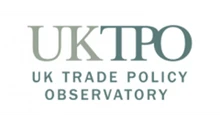Farming doesn’t just feed us: it powers economies, employing millions of people and shaping how we all live. But key challenges – including climate change and increasing barriers to cross-border trade – raise questions about how to provide a sustainable food supply for a growing world population.
Newsletter from 19 September 2025
Every meal you eat connects you to the global farming system. From bread baked with wheat imported from Canada to coffee grown in Uganda, agriculture shapes our diets, economies and environment.
Globally, around one in four people have agricultural jobs – more than the populations of Europe and North America combined – with most of the work concentrated in developing economies (see Figure 1). The sector contributes 4% to global GDP, providing not just food, but also vital raw materials such as cotton, rubber and timber.
Figure 1: Global employment in agriculture (percentage of total employment), 2023
Source: World Bank, ILO-EST (International Labour Organization estimates)
In richer industrialised countries like the UK, the food system is heavily reliant on imports. Only 62% of what we eat is produced domestically, leaving us highly dependent on global supply chains. The Russian invasion of Ukraine – a country that supplies over one-third of global wheat exports – shows how quickly reliance translates into higher prices at home, with UK food inflation hitting a ten-year high in early 2022.
As well as being globalised and, as a result, vulnerable to supply chain shocks, the modern food system is also under mounting pressure from climate change, water scarcity and soil degradation. The agri-food system is not just impacted by the climate crisis; it is also a major contributor, responsible for around one-third of global greenhouse gas emissions. Its resilience will be critical not just for food security, but also for economies and societies worldwide. With these concerns in mind, this week at the Economics Observatory, we published four new articles exploring the historical, current and future challenges facing farms around the world.
Farming through the ages
We kicked off our agriculture and farming-themed series with a piece by John Martin (University of Reading). He summarises over 300 years of agricultural development, setting out how British farming has evolved into what it is today.
John finds that Britain’s agricultural history is deeply entwined with its economic transformation, notably three distinct phases of agricultural change (or ‘revolutions’).
The first revolution – spanning the mid-18th to early-19th centuries – was marked by the enclosure of land as well as innovations like crop rotation and selective breeding. These changes boosted food output and freed up workers for the industrial revolution.
The second revolution – in the mid-19th century – was characterised by the industrialisation of farming through mechanisation and chemical fertilisers, aligning agriculture more closely with manufacturing.
The third revolution – during and just after the Second World War – was state-led, with governments seeking to maximise domestic food production through land conversion, mechanisation and scientific advances. Again, this dramatically increased productivity and self-sufficiency. For John, agriculture is more than just how we farm or what we eat: it is a vital contributor to Britain’s economic history.
He also highlights some ways in which these historical periods of rapid agricultural change provide lessons for how we can tackle modern challenges like climate change. While technological and scientific advancements play a major role in progress, it is the rapid adoption of new technologies that truly drives change. This is where policy has a role to play, as states can encourage (or hinder) the adoption of new farming practices.
Feeding the future
If history shows us how agriculture has adapted before, today’s challenges suggest that adaptation is needed once again. The wide range of risks facing the UK’s food system is explored by Christopher Lyon (University of York), Aled Jones and Elta Smith (Anglia Ruskin University).
Food systems around the world face an array of threats – from droughts and cyber-attacks to labour shortages and trade wars. According to these researchers’ work, such episodes could trigger food scarcity and even civil unrest in the next ten to 50 years. Recent events show that such concerns are not distant possibilities: solar storms have scrambled GPS tractors in the United States; Zimbabwe has lost half of its maize crop to drought; and US tariffs are already reshaping global food prices.
Christopher, Aled and Elta argue that UK policy has been too ‘short-termist’ and complacent in the face of these risks. The abrupt closure of the Sustainable Farming Incentive, which encouraged climate-friendly practices, exemplifies a piecemeal approach.
The new national food strategy, launched in July 2025, is a step forward, but these authors conclude that far more must be done to build resilience. One policy tool that they highlight is the use of ‘serious games’ – a technique traditionally used in military planning – to stress-test the food system and guide more effective decision-making. Such an approach could help the government to shore up its food system, ensuring that Britain’s farms are fit for the future.
While John’s historical article reminds us that the UK food system has weathered shocks in the past, this second piece looks forward to future challenges. Feeding the nation is no simple task – the path from field to fork is global, uncertain and more vulnerable than ever.
Bread and borders
An article by Lotanna Emediegwu (Manchester Metropolitan University) explores how US tariffs are affecting global food markets. President Trump has imposed baseline rates of 10% on US goods imports, rising as high as 50% for some major partners. While the European Union and the UK secured relatively favourable deals, grain exporters such as Brazil, Canada and India now face high barriers to US markets.
This comes at a time when global grain markets are already highly concentrated: a handful of countries dominate maize and wheat production. As the world’s leading maize exporter, the United States plays a pivotal role. Any disruption to commerce quickly ripples across supply chains. Indeed, global maize prices rose 4% in April following the US tariffs announcement, while retaliatory measures from China have brought further price volatility.
Market concentration is compounded by the dominance of four companies – Archer Daniels Midland, Bunge, Cargill and Louis Dreyfus (known as the 'ABCD' firms). Estimated to control 70–90% of global grain flows, the power of the ABCD group means that only a handful of countries produce grain and a small network of firms mediates its trade.
In such a system, shocks are magnified. When tariffs or droughts hit, competition is too thin to absorb the strain, giving the ABCD grain giants greater ability to set prices. The result is sharper spikes, with the steepest costs falling on poorer ‘food-insecure’ countries (see Figure 2).
Figure 2: Number of severely food-insecure people, 2014 to 2024
Source: FAOSTAT (statistics produced by the Food and Agricultural Organization of the United Nations)
Sub-Saharan Africa, the Middle East and small island states rely on imports for most of their food, with households often spending up to 70% of their incomes to feed themselves. In such contexts, tariff-driven price rises can quickly translate into hunger.
Lotanna’s article reminds us that agricultural policy is not only about yields and technology, but also about trade rules and geopolitics. Decisions in Washington can determine whether families in Lagos or Lima can afford to eat.
Seeds of support in Uganda
Finally, a piece by Florence Nakazi (Economic Policy Research Centre) explores the productivity problem facing Uganda’s smallholder farmers (see Figure 3).
Figure 3: Agricultural total factor productivity in sub-Saharan Africa versus Uganda, 1961 to 2022
Source: Fuglie (2015), ERS-USDA (Economic Research Service of the US Department of Agriculture)
Note: Total factor productivity (TFP) measures the amount of agricultural output produced from the combined set of land, labour, capital and material resources employed in farm production. If total output is growing faster than total inputs, then the total productivity of the factors of production (that is, TFP) is increasing.
They face stubbornly low yields, with fertiliser use remaining just a fraction of the African average – leading to lower incomes, higher vulnerability and missed opportunities. To address this gap, successive governments have rolled out subsidy schemes, from the Operation Wealth Creation programme to the World Bank-backed e-voucher system. These initiatives provide farmers with discounted seeds and fertilisers, aiming to boost productivity.
The evidence indicates that subsidies have lifted output: maize production doubled between 2016 and 2019, and households using e-vouchers saw yield gains of 30% for maize and 27% for rice. But these improvements were largely driven by expanding planted areas or improved seeds, while relative yield gaps remain an issue.
Florence finds that unlocking agricultural productivity depends on programme design and context: subsidies work best when paired with timely distribution, strong extension support and complementary policies.
But several unresolved challenges remain, including sustainability and soil health. Perhaps Ugandan policy-makers should look to the UK as a cautionary tale on short-termist agricultural policy. In England and Wales, intensive agriculture has caused arable soils to lose 40-60% of their organic carbon, estimated to cost £1.2 billion every year. Blindly chasing higher yields is a risky game.
Harvesting lessons
Taken together, the four articles in this series remind us that agriculture is shaped by history, threatened by the climate crisis and entangled with global trade and politics.
Whether through the price of bread or the health of soils, farming touches us all. Feeding the future will depend on choices made not just on farms, but also in parliaments setting policy, in markets shaping trade and in households deciding what to eat. After all, you reap what you sow.









































